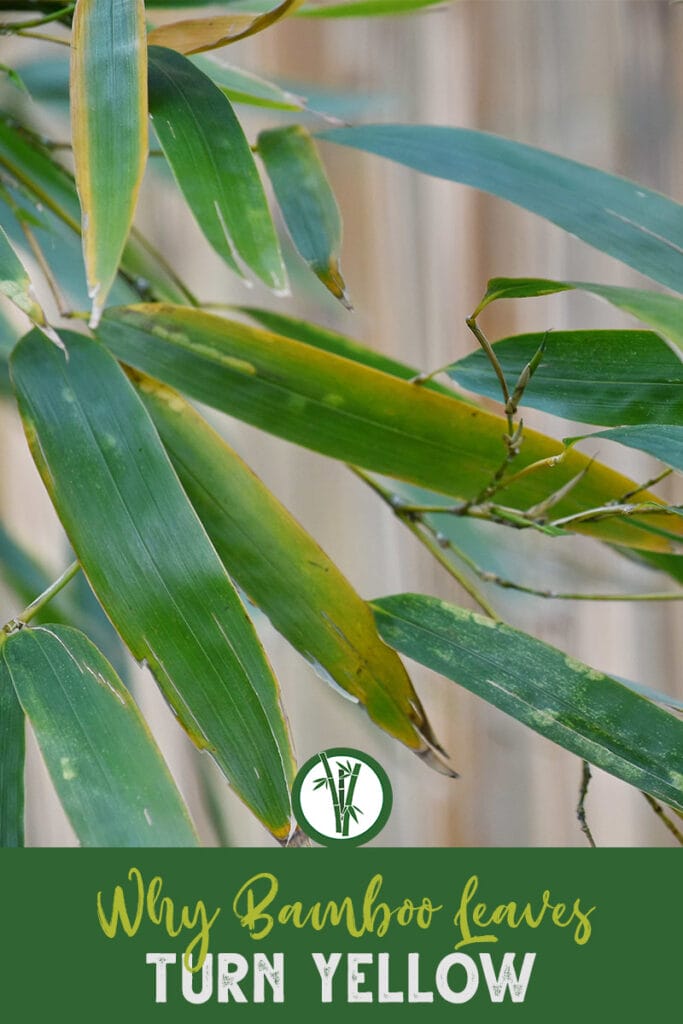
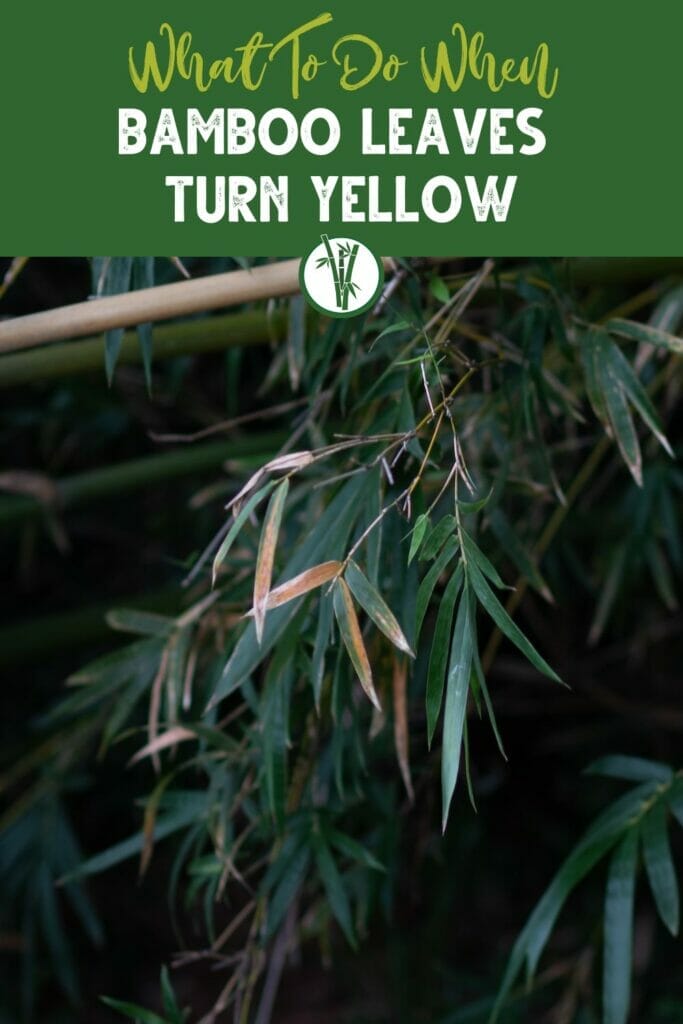
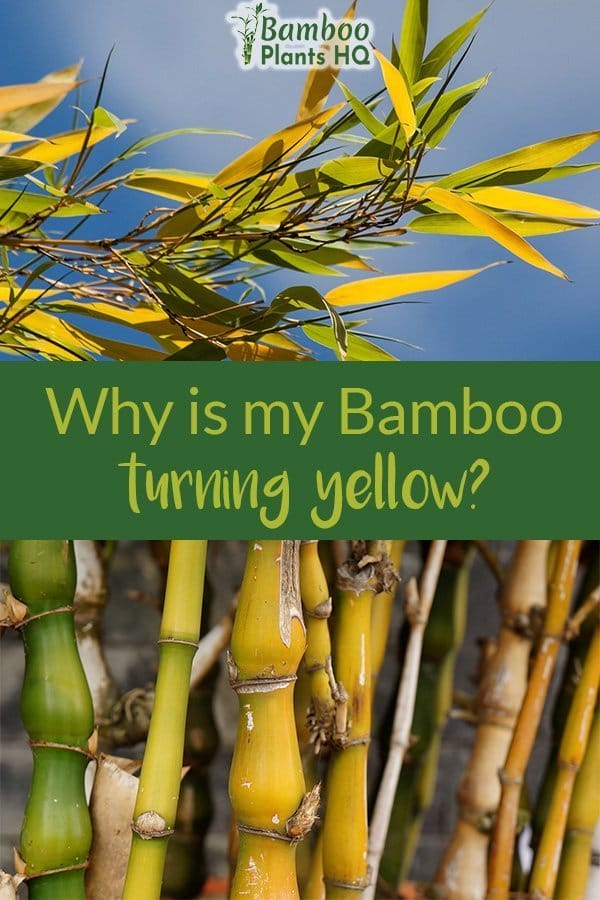
If you are wondering why your bamboo leaves or culms are turning yellow, don’t panic!
Watching your bamboo plant leaves turn yellow can be alarming, but most of the time, it’s actually a normal occurrence. The same goes for bamboo culms that become yellow. However, it could be that you don’t give your bamboo the required conditions it needs.
I want to clarify: In this post, we’re talking about real bamboo plants, but we have written about lucky bamboo as well and you can read about that here!
First, let’s have a look at what’s normal bamboo yellowing. Maybe this will already give you peace of mind.
What’s considered normal yellowing of bamboo
Although bamboo is an evergreen plant, it can still get a few yellow leaves and culms. That’s totally common.
Normal bamboo leaf yellowing
Like many other plants, bamboo sheds its leaves and grows new ones. What happens is that the bamboo will cut off the nutrients in the leaves to use it in other places. Due to this lack of nutrients, some of the leaves turn yellow and fall off.
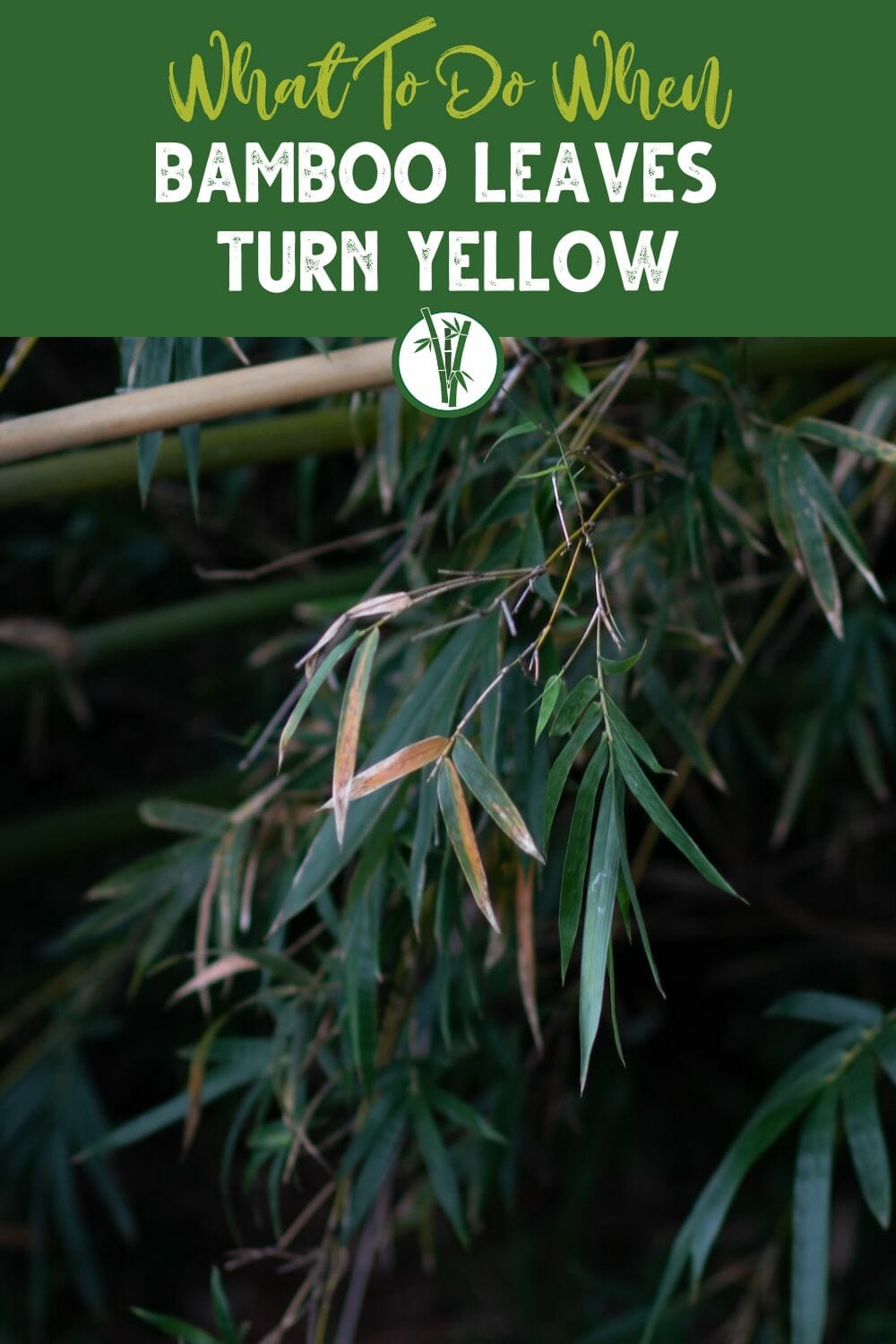
Because bamboo is evergreen, most species lose their leaves very gradually and replace those leaves with new ones. In this respect, bamboo plants have a mixture of green and yellow leaves most of the time. In spring, you may experience a larger yellowing than in other seasons. Spring is basically the fall for bamboo when it comes to its leaves.
With this being said, there are a few species that drop large amounts of leaves at one time, and this can be concerning… Typically a little research into your specific variety will give you peace of mind!
If, however, all of the leaves turn yellow and fall out without any green leaves following, you may have a bigger problem.
Another indicator of an existing problem is when the leaf tips turn brown. This discoloration on the leaves can be caused by a lack of water or wind damage.
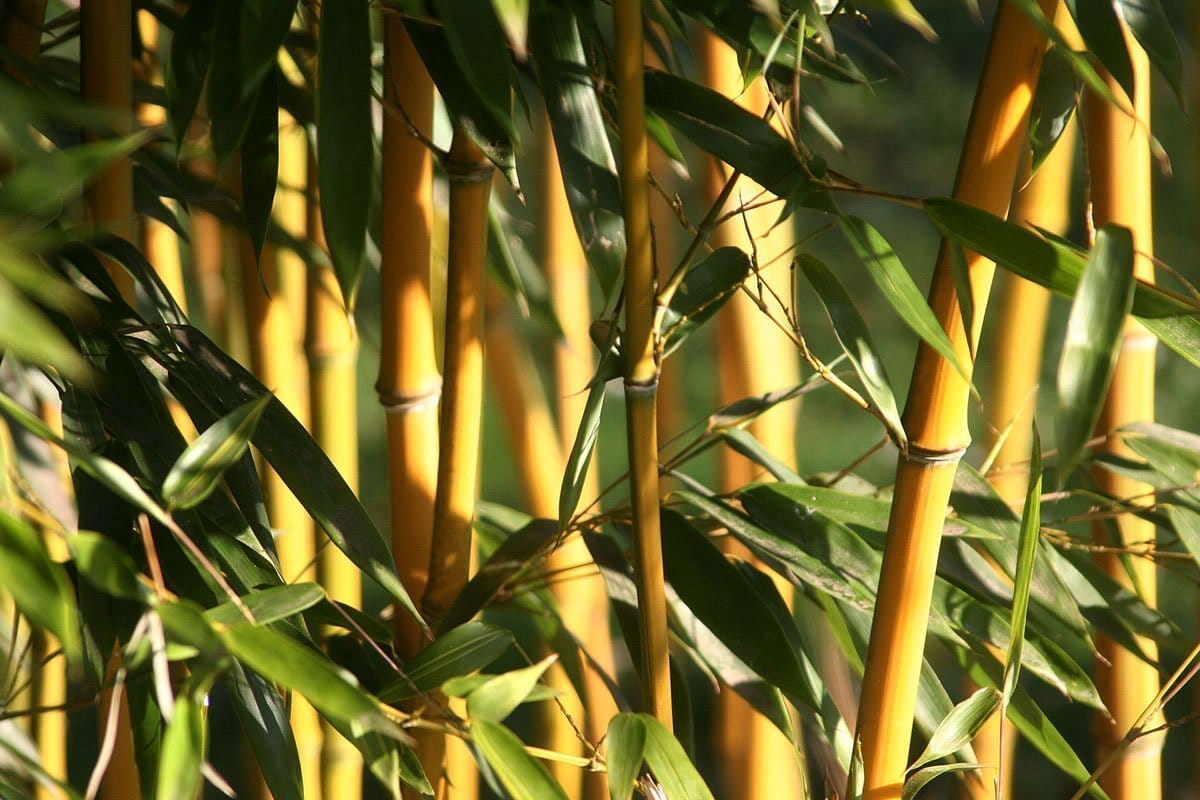
Normal bamboo culm yellowing
Ok, this may sound super ridiculous but: do you have a yellow bamboo variety? Some bamboo species start with green culms and turn yellow as they mature. I know most people pick their bamboo variety but maybe you couldn’t.
If it’s not a yellow bamboo, it may be still normal. Sometimes bamboo plants shoot just before the colder season. Depending on your area and the hardiness, those fresh shoots may die off when the temperature drops.
So, don’t panic if you have younger culms that turn yellow and maybe even brown. It’s kinda normal. Just clear them out by trimming them. This way they don’t “ruin the view”.
What species have more yellow leaves or culms than others?
As mentioned above, some species develop more yellow leaves than others. This goes for Phyllostachys Aurea (also known as Fish Pole Bamboo or Golden Bamboo) and Phyllostachys Edulis Moso (commonly used for bamboo fabrics). Both will lose a larger amount of leaves in spring.
Golden Bamboo is one of the most common bamboos in the United States. It grows upright and is very strong, as well as useful. Phyllostachys Edulis Moso is not as common in the United States but its characteristics are perfect to create bamboo threads from it.
Fargesia Murielae, also known as Umbrella Bamboo, will drop more leaves in fall. So it’s behaving like trees.
Still Concerned? Let’s do troubleshooting!
If you still believe that the yellowing is a problem and not just a natural part of your plant’s lifecycle, it’s time to start troubleshooting.
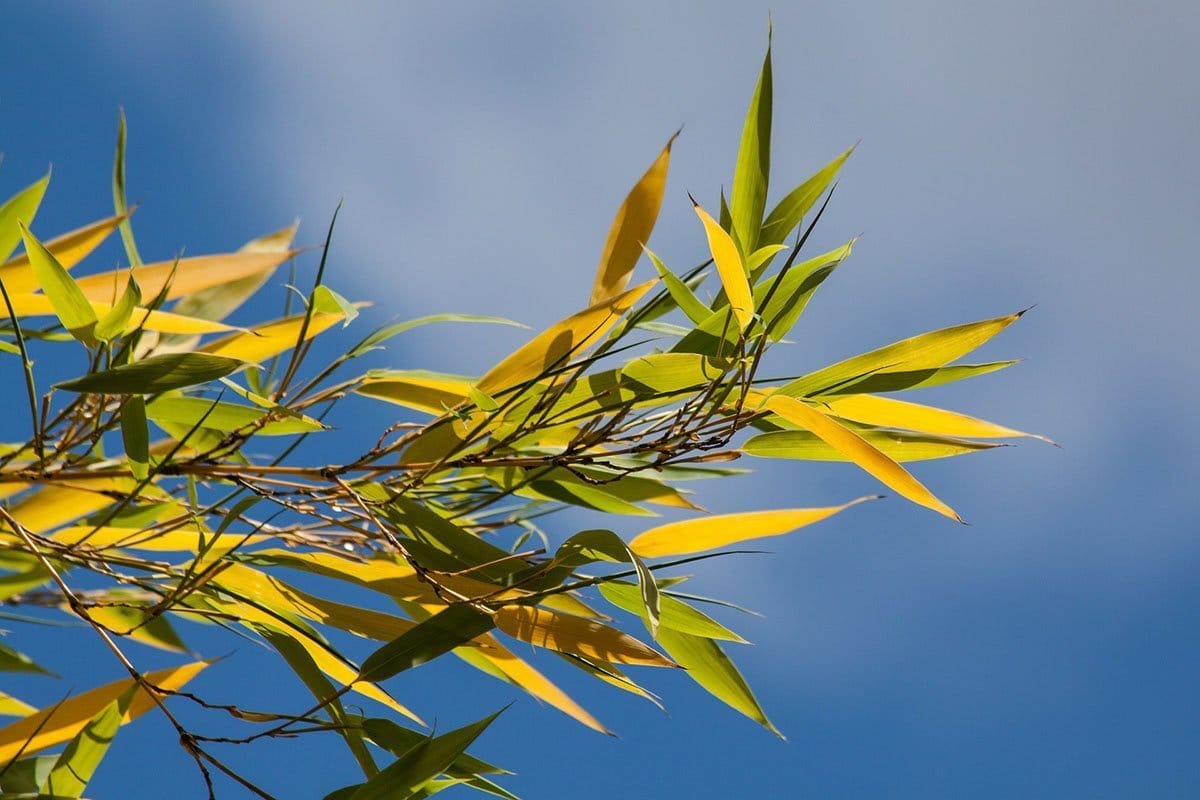
1. Fresh bamboo leaves are yellow
First, take a good look at the newest leaves (if you can distinguish them). If these leaves are turning yellow, it may indicate that the plant is lacking in iron. That’s a common problem in soil that is too alkaline.
Although most species can do all pH levels, they mostly prefer slightly acidic soil, though.
If you’re concerned about the pH level of your soil, you can purchase a pH testing kit. We would recommend getting one like this. Then you can test the soil around the base of the plant.
Our Recommendation
If you’re not sure what pH level your soil has, you can simply test it with a tool. It’s the easiest way to find out if you need to work on your soil before planting your bamboo.
If your soil turns out to be alkaline, you should feed your plant something more acidic:
- This can be an ericaceous compost made with coffee grounds, oak leaves, or pine needles. You can add a layer or mix it into the existing soil. This way you can change the overall soil condition.
- Another way would be adding an acidic plant food. You can purchase a fertilizer with Chelate Iron* or this organic iron-tone fertilizer*. and add this to the soil around your plant. Be careful to not use too much fertilizer, though. Bamboo does not like over-fertilizing.
- Instead of iron, you can also add sulfur to make the soil more acidic. You can get a 5 lbs bag on Amazon* and add a bit every once in a while if you have too alkaline soil in your garden.
2. Older bamboo leaves are yellowing
If older leaves are primarily the ones that turn yellow (and you don’t believe it to be natural leaf drop), then you may want to apply a fertilizer with nitrogen.
So, the soil doesn’t provide enough nutrients to the bamboo. That’s why you need to fertilize.
There are times when fertilizers should be applied. Although it can be confusing as to when exactly they need food, watching for the first signs of yellowing can be a good indicator – especially for the nitrogen.
You can add commercial fertilizer or make your own bamboo plant food.
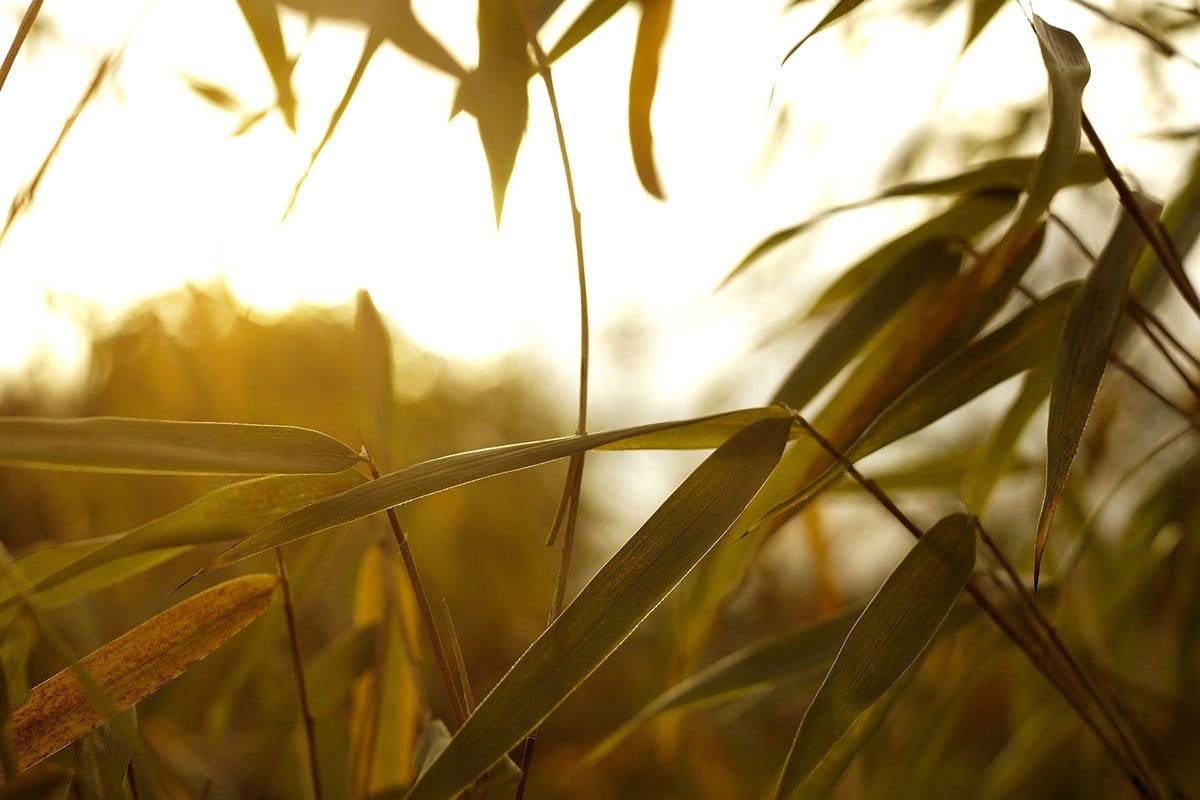
3. Bamboo leaves turn yellow with brown tips
If you spot a lot of yellow-brown leaves and the soil is dry, you are not keeping up the irrigation game. Bamboo plants need a lot of water, so you may need to increase your watering frequency.
If you are too busy to water manually, you should seriously consider a drip irrigation system in order to give your plants what they need.
You also should stop yourself from raking up the leaves on the ground, because they keep the soil moist.
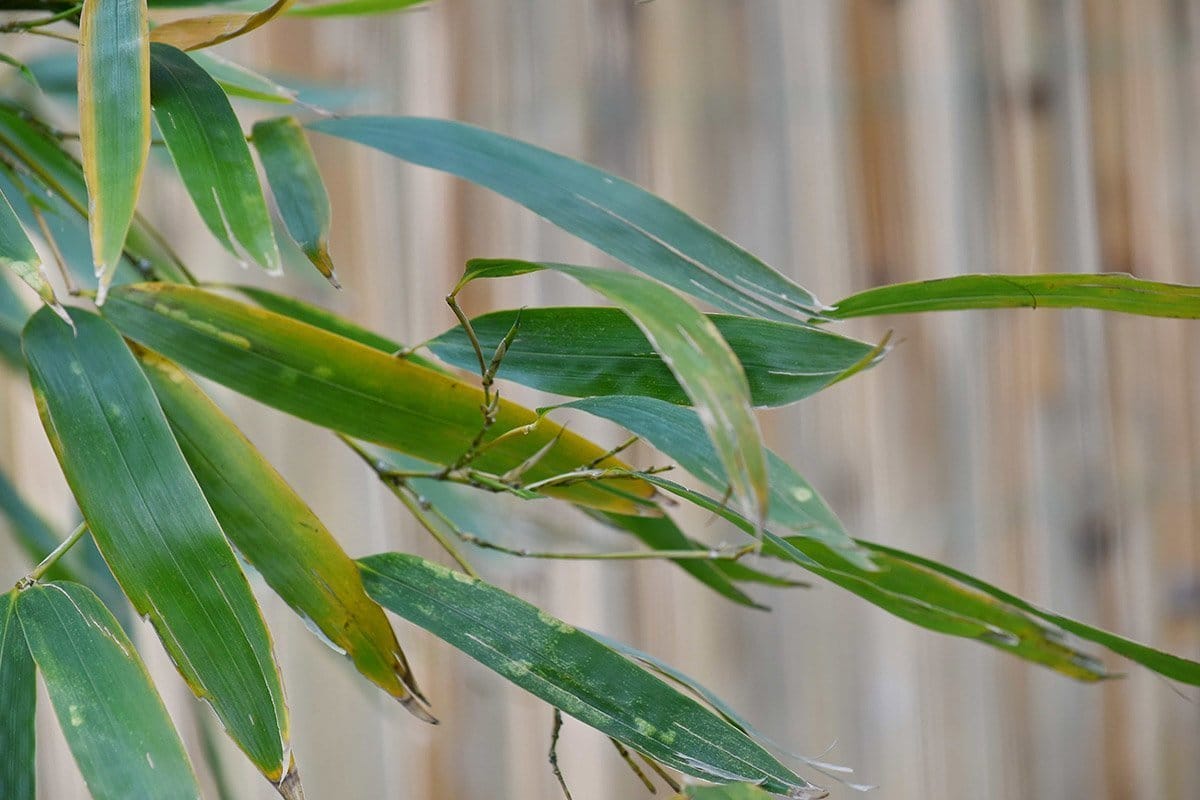
4. Bamboo leaves have yellow-pale spots
Maybe your problem actually is pest-related. If you see yellowish-pale spots on the bamboo leaves, it is very likely a mites infestation.
They are hard to see because they are very tiny. However, they suck the life out of the leaf. So, you can easily spot those areas.
There are many ways to get rid of them. You can pressure wash the plants with water or insecticidal soap or you can use neem oil.
5. Yellow bamboo leaves and culms
If you water regularly and the soil seems too moist or becomes water-logged, you need to do something with the soil again. Bamboo needs well-draining aerated soil.
You should apply organic compost every now and then. It will help to open up heavy clay soil so that it drains better. In addition, it provides more nutrients to the bamboo.
Pin it for later!
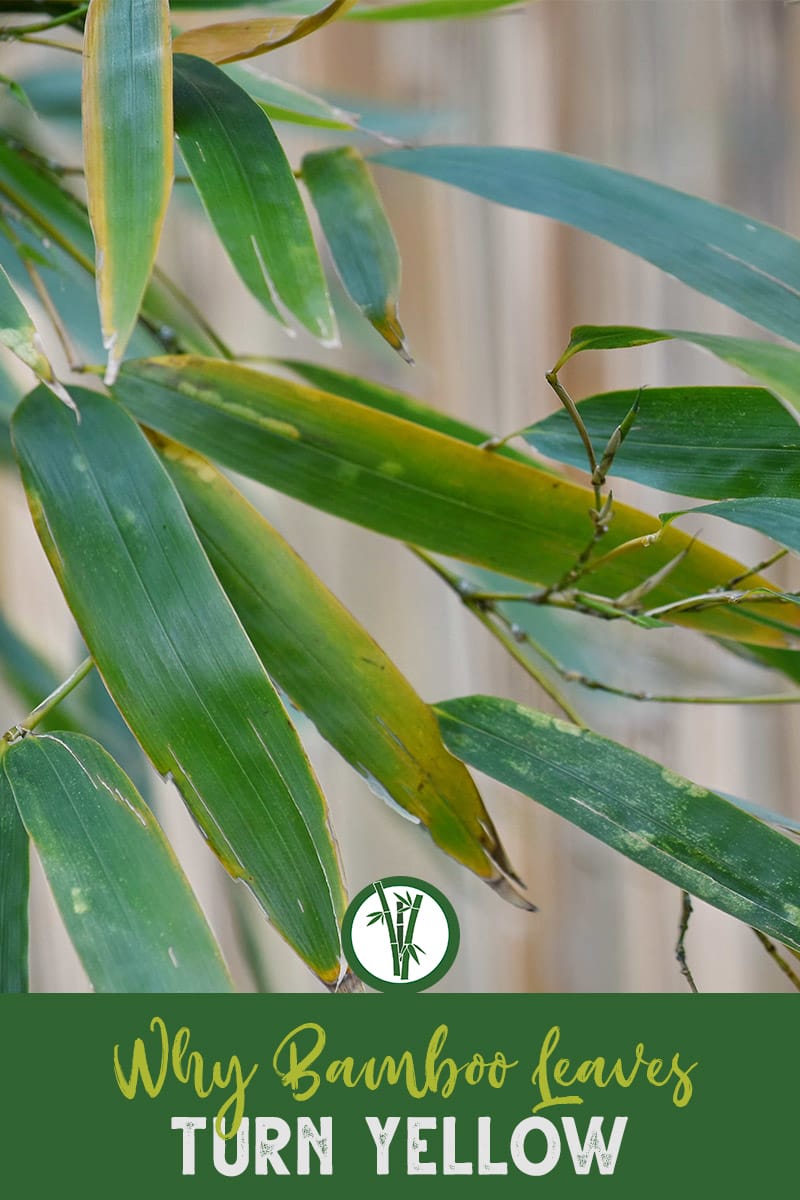
Other reasons why your bamboo plants are turning yellow
There still could be more reasons why your bamboo is turning yellow. Because there are so many little factors that could influence your bamboo’s health, we have to let you determine if one of these could be an issue.
It might be that your bamboo is just planted at the wrong spot. Maybe it is too sunny or the contrary. It could also be too windy for the stems or other chemicals used in the surrounding environment.
Obviously, soggy soil can be amended, but some things like too much sun or not enough can be difficult to remedy.
Again, it always depends on the bamboo species you have in your backyard. The trick with the acidic soil may not apply to you because you have Shibatea bamboo. Your Chimonobambusa bamboo may turn yellow because you placed it in direct sunlight, which on the other hand, Phyllostachys bamboo would love.
We hope this will help you to take care of your yellowing bamboo plants!

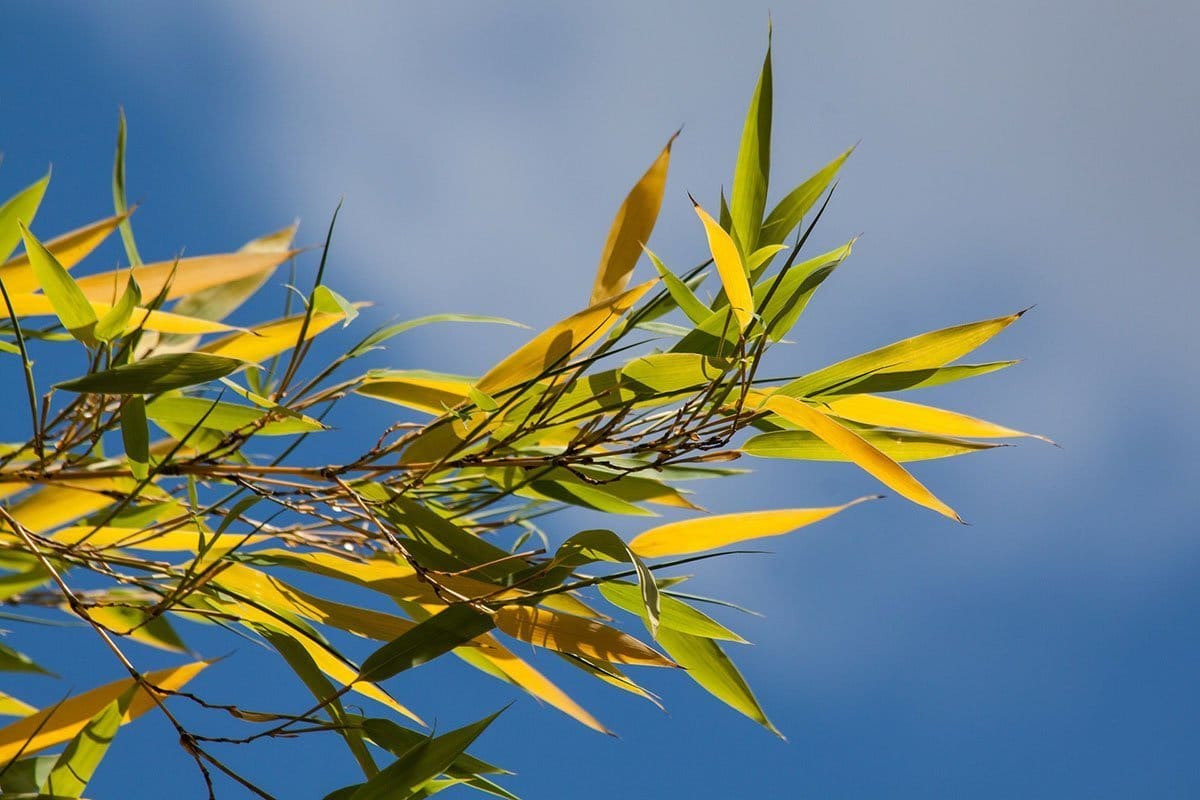

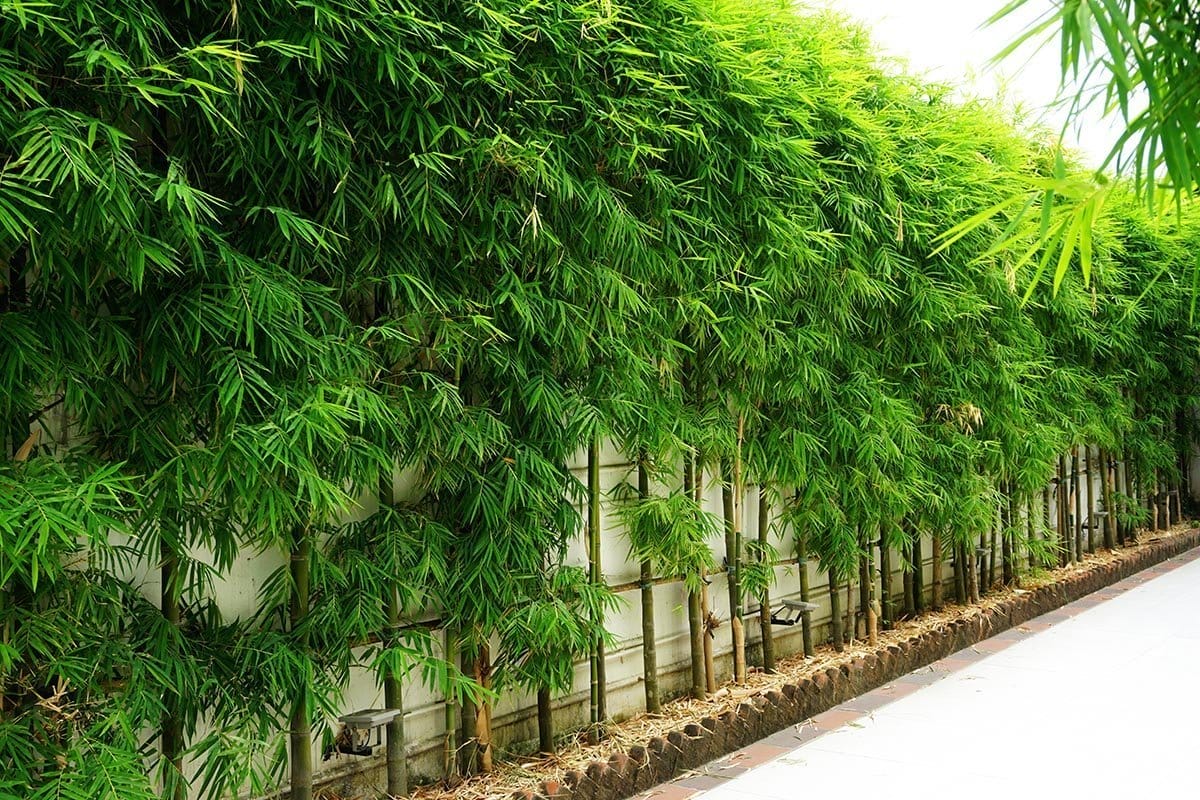
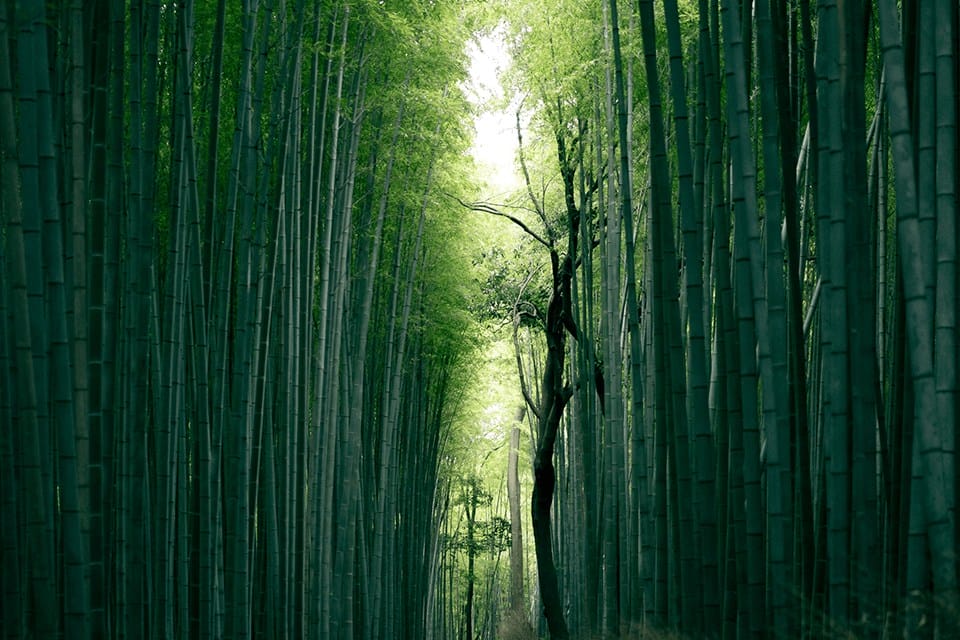
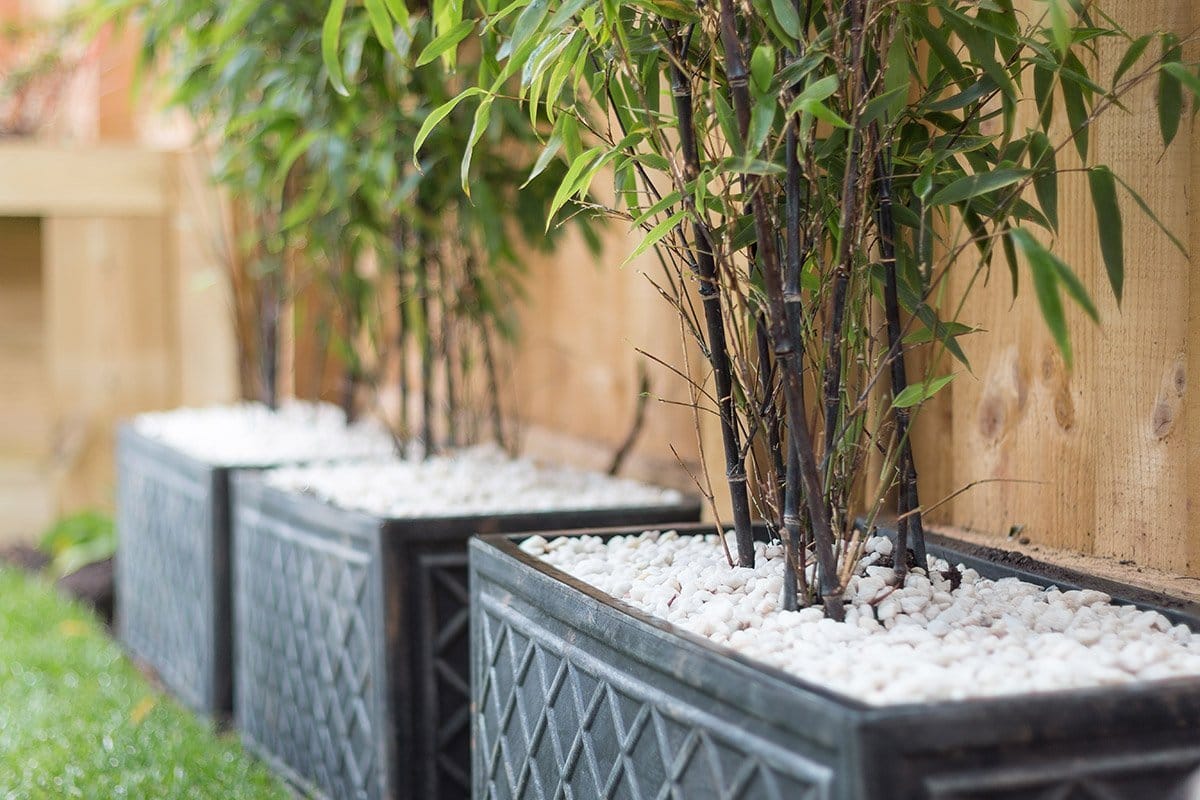
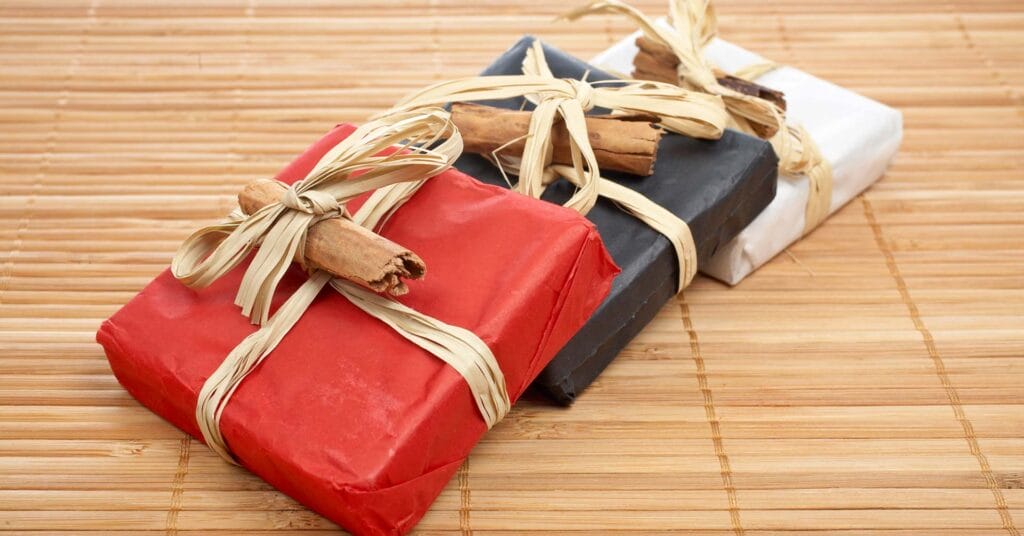
36 Comments
Hey I read the article but I still can’t find why my moso is having those pale yellow with greener stripes on the new leaves even the new sprouts looks better but still yellowish
Can you identify it as one of these pests or diseases?
I have just bought a Bamboo plant about 7ft high, it’s just in a pot but the new leaves are starting to curl round and the leaves are of a yellow/ brown colour, please help
Have you read the post and went through all possible problems: water quality & watering, soil, good location for the species, is the pot big enough?
We bought 3 Phyllostachys Aurea about a year ago and planted them in fairly large ceramic pots. All seemed fine until a few weeks ago when the tips of the leaves have started to turn yellow and the bamboo started to look very sorry for itself. Any help will do as I am a complete imbecile when it comes to plants etc.
Many Thanks
Dan
Hi Dan, have you experienced any harsh weather that could have caused it? I don’t know how old the plants were when you bought them. Did you see flowers on them? Is the soil too wet or dry?
I have two Phyllostachys Spectabilis and one Phyllostachys nigra and this is my 2nd season.
Last year they did really well after I removed the top layer of compost etc. and replaced with a layer of John Innes No 3, I added some bone meal and fresh compost over the top and the falling leaves as a mulch and fed them every two weeks with tomato plant food. I added a little more bone meal and was so pleased with their progress.
This March all the leaves have turned yellow. Towards the end of March I repeated changing the top soil etc. but there has been no improvement as yet. The stalks look ok and the root’s looked good and there were a couple of new green one’s. This last winter was colder and it has been very windy, do you think I have lost them?
Thank you in advance for you he’
I don’t think so. It was probably as you said the winter weather. As long as the culms and roots look well the foliage should come back soon too. Spring is like the fall for bamboo so they tend to lose more leaves in the spring (although it’s evergreen).
Hi Natalie and James. We have an extensive screen of b. Oldhamii between our pool and a neighbor’s house that is higher than our property. We’re in San Diego County near the coast. The bamboo has provided effective screening until this Spring, when more than the usual number of leaves have turned yellow and brown and have fallen. We’ve fed it with Grow Power Plus and irrigated well. Soil is clay. We have a fertilizer tank in the irrigation system but have not used it until filling it with Super Thrive a few weeks ago. I can send photos if it would help.
Hi Floyd, I’m sorry to hear that. Did you always fertilize that much? Was the winter weather different than in other years?